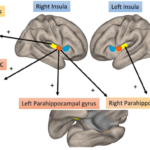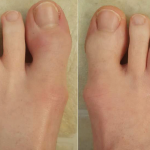2. Are Self-Reports of the Extent of Psoriasis & Dactylitis Valid?
Abstract 1671: Nielung et al.2
In clinical evaluations in healthcare settings, the patient usually provides the history of their symptoms and their chronology, and the physician determines the physical findings in a more objective way. The traditional approach may change in the future; however, as indicated by a study from Denmark concerning a national registry system called DANBIO. This system incorporates patient-reported outcome measures (PROMs) that are completed by patients online prior to consultation with the physician.
In this study, the PROMs were extended to include non-musculoskeletal manifestations, including dactylitis, skin and nail psoriasis and uveitis, as reported by patients with PsA. These are all physical findings, the usual province of the physician. The patient reports were compared with those of the physicians. Following the initial experience with this registry, the question on dactylitis was modified to include a photo of a patient foot to illustrate “sausage toes.” The incorporation of the photo boosted agreement of patient and physician assessments.
The agreement between patients and physicians on skin psoriasis and nail psoriasis was also good, although uveitis was uncommon in the overall patient population.
These findings are important because they suggest that patient self-reports can be useful in assessing and monitoring key manifestations of PsA in the real-world setting and can facilitate communication and care. For manifestations of psoriasis, either skin or joint, the physical findings can be readily appreciated. It will be of interest to know whether this approach can be extended to other rheumatic conditions in which the physical findings can be more subtle or nuanced.
3. Fibromyalgia with PsA
Abstract 1229: Maroof et al.3
PsA is a chronic disabling inflammatory arthritis that can be associated with fibromyalgia (FM), another source of chronic pain. As now defined, FM is a form of nociplastic pain that differs from nociceptive pain triggered by noxious stimuli or neuropathic pain from nerve injury. In FM, central sensitization can amplify pain; this amplification can lead to allodynia and hyperalgesia and can thereby complicate assessment of disease activity and its severity.
The etiology of FM is complex and can result from stress, trauma and other psychosocial factors; socioeconomic factors can also be drivers of this condition. In delineating the origin and impact of FM, determining its occurrence in different racial and ethnic populations as well as different countries can be informative. The study by Maroof et al. assessed FM in 554 PsA patients from Arab League of Associations of Rheumatology (ArLAR) countries using questionnaires and patient-reported outcomes (PROs).



